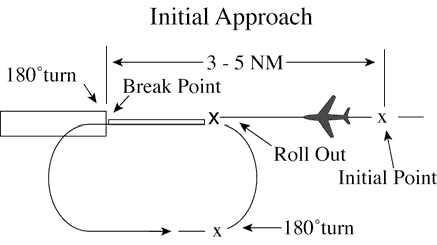3-10-12. OVERHEAD MANEUVER
- Views Views: 3,606
- Last updated Last updated:
-
3-10-12. OVERHEAD MANEUVER
Issue the following to arriving aircraft that will conduct an overhead maneuver:
- Pattern altitude and direction of traffic. Omit either or both if standard or when you know the pilot is familiar with a nonstandard procedure.
- PHRASEOLOGY
- PATTERN ALTITUDE (altitude). RIGHT TURNS.
- Request for report on initial approach.
- PHRASEOLOGY
- REPORT INITIAL.
- “Break” information and request for pilot report. Specify the point of “break” only if nonstandard. Request the pilot to report “break” if required for traffic or other reasons.
- PHRASEOLOGY
- BREAK AT (specified point). REPORT BREAK.
- Overhead maneuver patterns are developed at airports where aircraft have an operational need to conduct the maneuver. An aircraft conducting an overhead maneuver is VFR and the IFR flight plan is cancelled when the aircraft reaches the “initial point” on the initial approach portion of the maneuver. The existence of a standard overhead maneuver pattern does not eliminate the possible requirement for an aircraft to conform to conventional rectangular patterns if an overhead maneuver cannot be approved.
NOTE: Aircraft operating to an airport without a functioning control tower must initiate cancellation of the IFR flight plan prior to executing the overhead maneuver or after landing.
FIG 3-10-13 Overhead Maneuver 
- EXAMPLE
- “Air Force Three Six Eight, Runway Six, wind zero seven zero at eight, pattern altitude six thousand, report initial.”
- “Air Force Three Six Eight, break at midfield, report break.”
- “Air Force Three Six Eight, cleared to land.”
- “Alfa Kilo Two Two, Runway Three One, wind three three zero at one four, right turns, report initial.”
- “Alfa Kilo Two Two, report break.” “Alfa Kilo Two Two, cleared to land.”
- Timely and positive controller action is required to prevent a conflict when an overhead pattern could extend into the path of a departing or a missed approach aircraft. Local procedures and/or coordination requirements should be set forth in an appropriate letter of agreement, facility directive, base flying manual etc., when the frequency of occurrence warrants.
- Pattern altitude and direction of traffic. Omit either or both if standard or when you know the pilot is familiar with a nonstandard procedure.